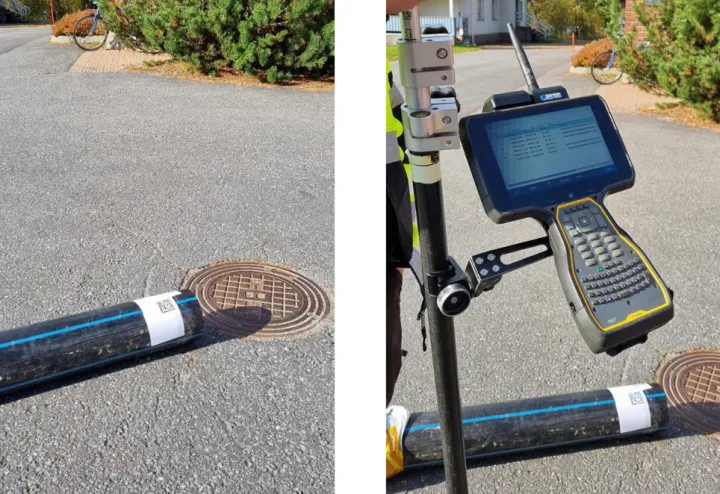The pilot project tested how a machine-readable code could make the management of network information easier in a water supply plant

The Finnish Plastics Industries Federation and its partners have piloted the digital distribution of plastic pipe product information with a machine-readable code. The pilot project's investigations on the incorporation of GTIN into machine-readable code yielded good results. The pilot was part of a project to facilitate the storage of product information and to improve the management of network assets in water utilities. The next step in the project is to create the general data model and operating model of digital data transmission.

During the fall of 2021, a co-operation group of representatives of Finland's largest water supply companies and leading manufacturers of plastic pipe systems carried out a study phase in its joint Machine-readable Code project. The report of the pilot was presented in October and is now available for everyone to download (in Finnish). The report is available from anyone involved in the implementation of the pilot.
Download the report from this link.
The project tested the digitalized transfer of product information from the plastic pipe to the water supply company's network information system using a machine-readable code. The aim was to read the code during the installation of the pipe and combine its information with the measuring of the location data of the site. The pilot obtained good results from the device test.
Based on the pilot's findings, more accurate product and manufacturing batch data would play a major role in developing the management of network assets in water utilities. The pilot project team considers that it is possible to include a unique identifier in the machine-readable code to identify both the product and the batch. Use of GTIN would allow for the automated retrieval of digital product information from the LVI-INFO product information register. Accurate product and batch information would facilitate the verification of product approvals and improve the traceability of products during use.
The next step in the Machine-readable Code project is to develop a widely accepted general data and operating model. The smooth and automatic transfer of digital data requires uniform databases and data transfer practices. To take the project forward, plastic pipe manufacturers need to develop their processes of printing codes on products and maintain information in the product data register. Water supply companies, on the other hand, must invest in development work that enables the implementation of machine-reading of the codes in their own operations. The information systems must be developed in such a way that the information collected by means of the machine-readable code can be stored in the desired form in the network information systems of water supply companies.
The pilot project was funded by the member companies of the Pipe Division of Finnish Plastics Industries Federation - Pipelife Finland Oy, Uponor Infra Oy and Wavin Finland Oy - as well as water utility cooperation partners - Alva-yhtiöt, HS Vesi, Lahti Aqua and Tampereen Vesi.
Trimble Solutions Oy, Civilpoint Oy, Keypro Oy, GS1 Finland Oy and Geotrim Oy were responsible for the practical implementation of the project. The project team carried out expert co-operation especially with the funders and the representatives of the LVI-INFO product information register.
THIS IS TRANSLATION FROM FINNISH ORIGINAL.
Purpose of translation is to give non-Finnish readers a general idea of the content of the pilot project. This article should always be used in connection with the Finnish original. The article was originally published on the Finnish Plastics Industries Federations’ website from this link.
